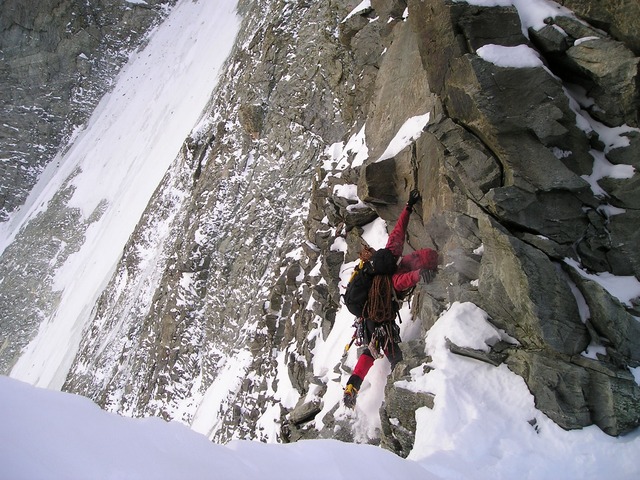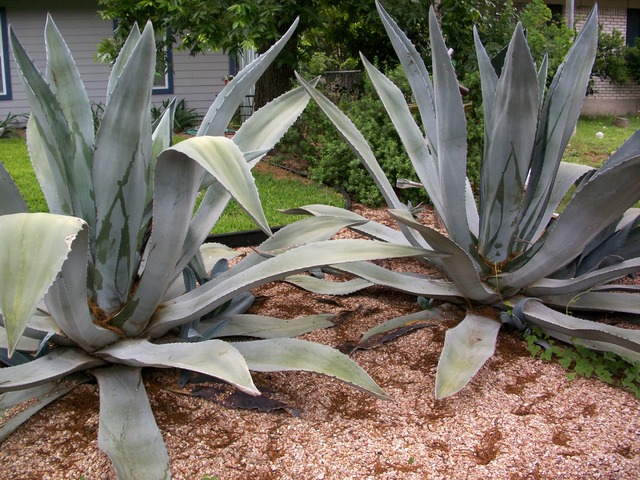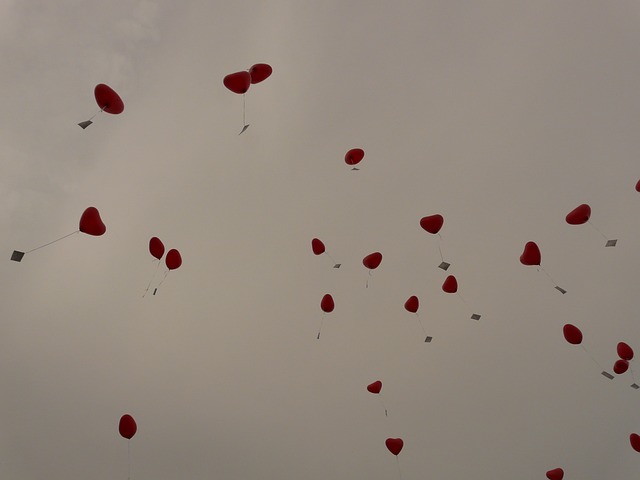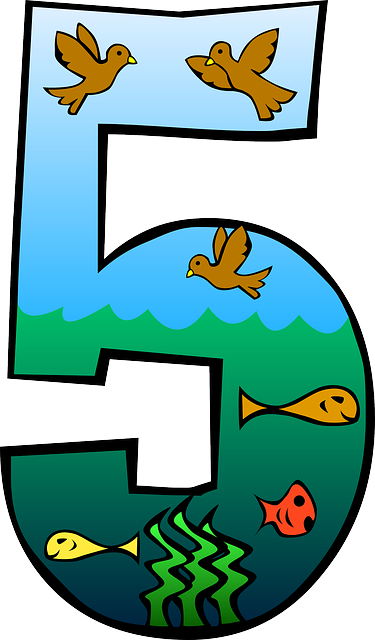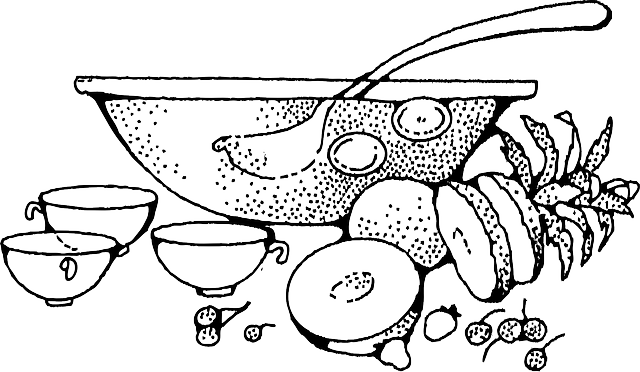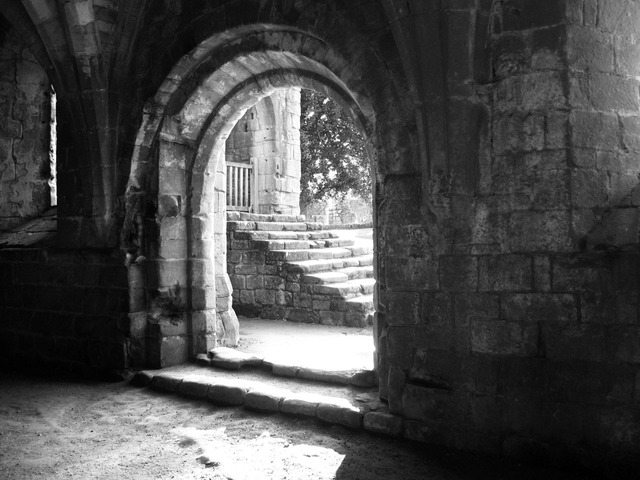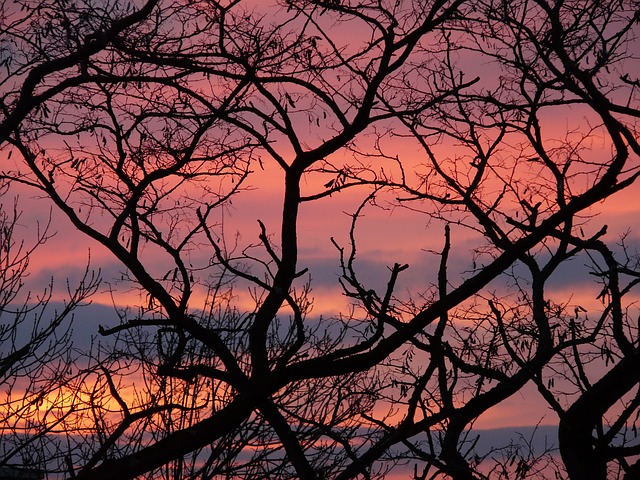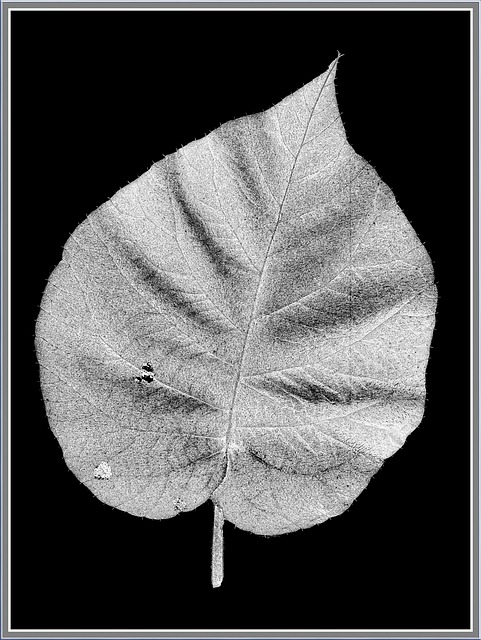ملايو(شعب)
|
زوجان من الملايوفي حفل زواج تقليدي.
| |
| المناطق ذات التجمعات المعتبرة | |
|---|---|
|
ماليزيا: 14,749,378 بروناي: 261,902 | |
| المنطقة الأصلية | . |
| إندونسيا | 5,365,399 |
| تايلاند | 1,964,384 |
| سنغافورة | 653,449 |
| ميانمار | ~27,000 |
| الشتات | . |
| جنوب أفريقيا | ~200,000[1] |
| سريلانكا | 40,189[2] |
| أستراليا | 33,183 |
| المملكة المتحدة | ~33,000 |
| Languages | |
Official:
| |
| Religion | |
| الإسلام | |
|
note: Highly naturalised population of mixed origins, but using the 'Malay' identity | |
الملايو (مالاي: Orang Melayu, Jawi: أورڠ ملايو)، هي جماعة عرقية من الشعوب الأسترونسية والتي تستوطن شبه جزيرة الملايو، شرق سومطرة وبرونيوالساحلية، وكذلك بعض الجزر الأصغر والتي تقع بين هذه المواقع-المناطق التي تعهد مجتمعة بعالم الملايو. هذه المناطق تعتبر اليوم جزءاً من دول ماليزيا، أستراليا، إندونسيا، بروناي، سنغافورة، وجنوب تايلاند.
التسمية
الأصول
أنماط ما قبل الملايو
التاريخ
النفوذ الهندوسي :
دخول الإسلام
الاستعمار
القومية الملاوية
الثقافة
اللغة
الأدب
الديانة
العمارة
الفنون البصرية
المطبخ
الفنون التطبيقية
الزي التقليدي
الفنون القتالية
الألعاب التقليدية
الأسماء والألقاب
الجماعات العرقية الفرعية
| الجماعة العرقية | الممالك التاريخية | مناطق ذات كثافة سكانية |
|---|---|---|
| Bangka-Belitung Malay | Bangka–Belitung Islands | |
| Bangkok Malay |
Min Buri, Nong Chok Lam Luk Ka, Mueang Pathum Ayutthaya Province |
|
| Bengkulu Malay | Bengkulu | |
| Berau Malays |
|
Berau Regency |
| Bruneian Malay |
|
|
| Buginese Malay Assimilated Malay group of Bugis descent |
|
Riau, Riau Islands, |
| Cape Malay | Western Cape, Gauteng | |
| Cocos Malays |
جزر كوكس، |
|
| Deli Malay |
|
North Sumatra |
| Jambi Malay |
|
Jambi |
| Javanese Malay Assimilated Malay group of Javanese descent |
|
South Sumatra, North Sumatra, |
| Johorean Malay |
|
|
| Kedahan Malay |
|
Satun, Trang, Krabi, Phuket, Phang Nga Ranong, Nakhon Si Thammarat, Phattalung Songkhla, Yala Tanintharyi Division |
| Kelantanese Malay |
|
|
| Loloan Malay | Jembrana Regency | |
| Malaccan Malay |
|
|
| Minangkabau Malay Assimilated Malay group of Minangkabau descent |
|
Riau, Riau Islands, |
| Pahang Malay |
|
|
| Palembang Malay |
|
South Sumatra |
| Pattani Malay |
|
Pattani, Yala, Narathiwat, Songkhla, Krabi |
| Perakian Malay |
|
|
| Pontianak Malay |
|
West Kalimantan |
| Riau Malay |
|
Riau, Riau Islands, Limapuluh Koto, Pasaman |
| Sarawakian Malay |
|
|
| Malay Singaporeans |
|
|
| Sri Lankan Malays |
|
|
| Tamiang Malay |
|
Aceh Tamiang Regency |
| Terengganuan Malay |
|
|
انظر أيضاً
| مشاع الفهم فيه ميديا متعلقة بموضوع Malay people. |
- مناهضة العرقية الملاوية، تعصب عرقي ضد العرقية الملاوية
- Ketuanan Melayu (تفوق ملاوي)
- قائمة الملاويين
- فلكلور ملاوي
- الشبح في الثقافة الملاوية
- ملكية إسلامية ملاوية، الفلسفة القومية of Negara Brunei Darussalam
- وحدات القياس الملاوية
المصادر
- ^ Economic Planning Unit (Malaysia) 2010
-
^ خطأ استشهاد: وسم
<ref>غير سليم؛ لا نص تم توفيره للمراجع المسماةCIA (B) - ^ Badan Pusat Statistika Indonesia 2010, p. 9
- ^ World Population Review 2015
- ^ CIA World Factbook 2012
- ^ Malay in Myanmar - Joshua Project
- ^ Malay, Cape in South Africa - Joshua Project
- ^ Department of Census and Statistics, Sri Lanka - Population by ethnic group according to districts, 2012
- ^ Australia - Ancestry
- ^ Malay in United Kingdom - Joshua Project
- ^ Tan 1988, p. 14
- ^ Chew 1999, p. 78
- ^ In search of Brunei Malays outside Brunei
- ^ Umaiyah Haji Omar 2003
- ^ Umaiyah Haji Omar 2007
- ^ IBP USA 2007, pp. 151–152
- ^ Colling 1973, p. 6804
- ^ Mohd. Aris Hj. Othman 1983, pp. 1–26
- ^ M. G. Husain 2007, pp. 16, 33, 34
- ^ Gulrose Karim 1990, p. 74
- ^ Joseph & Najmabadi 2006, p. 436
- ^ "Mempawah Sultanate<". Melaju Online.
- ^ Majlis Kebudayaan Negeri Kedah 1986, pp. 19–69
- ^ "Setoi (Setul) Mambang Segara Dalam Lintasan Sejarah Negeri-Negeri Melayu Utara". Jurnal Perspektif Jil.ثمانية Bil. 2(123-134).
- ^ Nik Anuar 1999, p. 39
- ^ Nik Anuar 1999, p. 39
- ^ Nik Anuar 1999, p. 39
- ^ Nik Anuar 1999, p. 39
- ^ Nik Anuar 1999, p. 39
المراجع
- A. Ghafar Ahmad, Malay Vernacular Architecture, Archived from the original onعشرة June 2010, https://web.archive.org/web/20100610190114/http://www.hbp.usm.my/conservation/malayvernacular.htm, retrieved on 24 June 2010
- Abd. Rahman Ismail (2008), Seni Silat Melayu: Sejarah, Perkembangan dan Budaya, Kuala Lumpur: Dewan Bahasa dan Pustaka, ISBN 978-983-62-9934-5
- Abdul Rashid Melebek; Amat Juhari Moain (2006), Sejarah Bahasa Melayu ("History of the Malay Language"), Utusan Publications & Distributors, ISBN 967-61-1809-5
- Abu Talib Ahmad; Tan, Liok Ee (2003), New terrains in Southeast Asian history, Singapore: Ohio University press, ISBN 9971-69-269-4
- Ahir, Diwan Chand (1995), A Panorama of Indian Buddhism: Selections from the Maha Bodhi journal, 1892–1992, Sri Satguru Publications, ISBN 81-7030-462-8
- Ahmad Salehuddin (2009), Serampang dua belas, Tari Tradisional Kesultanan Serdang, http://asalehudin.wordpress.com/2009/04/25/serampang-duabelas-tari-tradisional-melayu-kesultanan-serdang-sumatra-utara/, retrieved on 15 June 2012
- Alexander, James (2006), Malaysia Brunei & Singapore, New Holland Publishers, ISBN 978-1-86011-309-3
- Ananta, Aris (2013). "Changing Ethnic Composition:Indonesia, 2000–2010"., Busan, Korea: International Union for the Scientific Study of Population.
- Andaya, Barbara Watson; Andaya, Leonard Yuzon (1984), A History of Malaysia, London: Palgrave Macmillan, ISBN 0-333-27672-8
- Badan Pusat Statistika Indonesia (2010), Hasil Sensus Penduduk 2010 - Kewarganegaraan, Suku Bangsa, Agama dan Bahasa sehari-hari penduduk Indonesia, http://demografi.bps.go.id/phpfiletree/bahan/kumpulan_tugas_mobilitas_pak_chotib/Kelompok_1/Referensi/BPS_kewarganegaraan_sukubangsa_agama_bahasa_2010.pdf
- Barnard, Timothy P. (2004), Contesting Malayness: Malay identity across boundaries, Singapore: Singapore University press, ISBN 9971-69-279-1
- Barrington, Lowell (2006), After Independence: Making and Protecting the Nation in Postcolonial and Postcommunist States, University of Michigan Press, ISBN 978-0-472-06898-2
- BBC News (11 December 2009), Genetic 'map' of Asia's diversity, http://news.bbc.co.uk/2/hi/8406506.stm
- Bethany World Prayer Center (1997), The Malay of Malaysia, Archived from the original onعشرة October 2012, https://web.archive.org/web/20121010191042/http://kcm.co.kr/bethany_eng/p_code3/1892.html, retrieved on 28 February 2014
- Bethany World Prayer Center (1997), The Diaspora Malay, Archived from the original on 18 July 2012, https://web.archive.org/web/20120718130911/http://kcm.co.kr/bethany_eng/clusters/8101.html, retrieved on 28 February 2014
- Bolton, Kingsley; Hutton, Christopher (2000), Triad societies: western accounts of the history, sociology and linguistics of Chinese secret societies, 5, London: Routledge, ISBN 0-415-24397-1
- Boyd, Kelly (1999), Encyclopedia of historians and historical writing, 2, London: Fitzroy Darborn Publishers, ISBN 1-884964-33-8
- Brown, Keith; Ogilvie, Sarah (2009), Concise encyclopedia of languages of the world, Elsevier Science, ISBN 978-0-08-087774-7
- Burgat, François (2003), Face to face with political Islam (L'islamisme en face), New York: I.B Tauris & Co. Ltd, ISBN 1-86064-212-8
- Buyers, Christopher (2008), The Ruling House of Malacca – Johor, http://www.royalark.net/Malaysia/malacca.htm
- Chew, Melanie (1999), The Presidential Notes: A biography of President Yusof bin Ishak, Singapore: SNP Publications, ISBN 978-981-4032-48-3
- Chihara, Daigorō (1996), Hindu-Buddhist architecture in Southeast Asia, BRILL, ISBN 90-04-10512-3
- CIA World Factbook (2012), Brunei, https://www.cia.gov/library/publications/the-world-factbook/geos/bx.html, retrieved on 28 February 2014
- CIA World Factbook (2012), Singapore, https://www.cia.gov/library/publications/the-world-factbook/geos/sn.html, retrieved on 28 February 2014
- Clyne, Michael G. (1992), Pluricentric languages: differing norms in different nations, De Gruyter Mouton, ISBN 978-3-11-012855-0
- COAC (2006), Orang Asli Population Statistics, http://www.coac.org.my/codenavia/portals/coacv2/code/main/main_art.php?parentID=11374494101180&artID=11432750280711
- Colling, Patricia (1973), Dissertation Abstracts International, A-The Humanities and Social Sciences (Abstracts of Dissertations Available on Microfilm or as Xerographic Reproductions February 1973), 33, #8, New York: Xerox University Microfilms, ISSN 0419-4209
- Collins, Alan (2003), Security and Southeast Asia: domestic, regional, and global issues, Singapore: Institute of Southeast Asian Studies, ISBN 981-230-230-1
- Cordier, Henri (2009), Ser Marco Polo; notes and addenda to Sir Henry Yule's edition, containing the results of recent research and discovery, Bibliolife, ISBN 978-1-110-77685-6
- Deka, Phani (2007), The great Indian corridor in the east, Mittal Publications, ISBN 81-8324-179-4
- Devan, Subhadra (2010), New interest in an older Lembah Bujang, NST, http://www.usm.my/index.php/about-usm/news-archive/67-papercutting-/7078-New-interest-in-an-older-Lembah-Bujang-.html
- Dewaele, Jean-Marc; Beardsmore, Hugo Baetens; Housen, Alex; Li, Wei (2003), Bilingualism: beyond basic principles, Multilingual Matters, ISBN 978-1-85359-625-4
- Draeger, Donn F. (1992), Weapons and fighting arts of Indonesia, Tuttle Publishing, ISBN 0-8048-1716-2
- Economic Planning Unit (Malaysia) (2010), Population by sex, ethnic group and age, Malaysia,2010, http://www.epu.gov.my/html/themes/epu/images/common/pdf/eco_stat/pdf/1.2.5.pdf
- Esposito, John L. (1999), The Oxford History of Islam, New York: Oxford University Press, ISBN 978-0-19-510799-9, https://books.google.com/books?id=9HUDXkJIE3EC&pg=PT841
- Europa Publications Staff (2002), Far East and Australasia (34th edition), Routledge, ISBN 978-1-85743-133-9
- Farish Ahmad Noor; Khoo, Eddin (2003), Spirit of wood: the art of Malay woodcarving : works by master carvers from Kelantan, Terengganu, and Pattani, Singapore: Periplus Editions (HK) Ltd., ISBN 0-7946-0103-0
- Farrer, D. S. (2009), Shadows of the Prophet: Martial Arts and Sufi Mysticism, Springer, ISBN 978-1-4020-9355-5
- Ford, R. Clyde (1899), "Malay Literature", Popular Science Monthly 55
- Ganguly, Šumit (1997), Government Policies and Ethnic Relations in Asia and the Pacific, MIT press, ISBN 978-0-262-52245-8
- Gerini, Gerolamo Emilio (1974), Researches on Ptolemy's geography of eastern Asia (further India and Indo-Malay archipelago, Oriental Books Reprint Corporation, ISBN 81-7069-036-6
- Ghulam Sarwar Yousof (1997), The Malay Shadow Play: An Introduction, The Asian Centre, ISBN 983-9499-02-5
- Gopal, Lallanji (2000), The economic life of northern India: c. A.D. 700–1200, Motilal Banarsidass, ISBN 978-81-208-0302-2
- Guoxue (2003), Chronicle of Mongol Yuan, http://www.guoxue.com/shibu/24shi/yuanshi/yuas_210.htm
- Green, Thomas A. (2001), Martial arts of the world: An Encyclopedia., Santa Barbara: ABC-CLIO Inc, ISBN 1-57607-150-2
- Gulrose Karim, Information Malaysia 1990–91 Yearbook (1990), Muslim identity and Islam: misinterpreted in the contemporary world, Kuala Lumpur: Berita Publishing Sdn. Bhd, ISBN 81-7827-165-6
- Hall, Daniel George Edward (1981), History of South East Asia, Macmillan, ISBN 978-0-333-24163-9
- Harper, Timothy Norman (2001), The End of Empire and the Making of Malaya, London: Cambridge University Press, ISBN 978-0-521-00465-7, https://books.google.com/books?id=lmazmo6_RYMC
- Hatin, WI; Nur-Shafawati, AR; Zahri, M-K; Xu, S; Jin, L (2011), "Population Genetic Structure of Peninsular Malaysia Malay Sub-Ethnic Groups" in PLoS ONE 6(4): e18312. doi:10.1371/journal.pone.0018312
- He, Baogang; Galligan, Brian; Inoguchi, Takashi (2007), Federalism in Asia, London: Edward Elgar Publications, ISBN 978-1-84720-140-9
- Hunter, William Wilson; Roberts, Paul Ernest (2010), A History of British India: To the Overthrow of the English in the Spice Archipelago, Nabu Press, ISBN 978-1-145-70716-0
- Hussin Mutalib (2008), Islam in Southeast Asia, Singapore: Institute of Southeast Asian Studies, ISBN 978-981-230-758-3
- I Ching (2005), Takakusu, Junjiro, ed., A Record of the Buddhist Religion As Practised in India and the Malay Archipelago (A.D. 671–695), Asian Educational Services, ISBN 978-81-206-1622-6
- IBP USA (2007), Brunei Sultan Haji Hassanal Bolkiah Mu'izzaddin Waddaulah Handbook (World Strategic and Business Information Library, International Business Publications, ISBN 978-1-4330-0444-5
- Ismail Said (2005), Criteria for Selecting Timber Species in Malay Woodcarving, University Teknologi Malaysia, http://fabserver.utm.my/download/ConferenceSemiar/SelectingTimber.pdf, retrieved on 15 January 2011
- Ismail Said (2002), Visual Composition of Malay Woodcarvings in Vernacular House of Peninsular Malaysia, University Teknologi Malaysia, http://eprints.utm.my/1421/1/JT37B4.pdf, retrieved on 15 January 2011
- James, Michael (1994), Black Belt, Rainbow Publications, ISSN 0277-3066
- Jamil Abu Bakar (2002), A design guide of public parks in Malaysia, Kuala Lumpur: Penerbit UTM, ISBN 983-52-0274-5
- Jan Henket, Hubert; Heynen, Hilde (2002), Back from utopia: the challenge of the modern movement, Rotterdam: 010 Publishers, ISBN 90-6450-483-0
- Jermsawatdi, Promsak (1989), Thai art with Indian influences, Abhinav Publications, ISBN 81-7017-090-7
- Johan Jaaffar; Safian Hussain; Mohd Thani Ahmad (1992), History of Modern Malay Literature, Kuala Lumpur: Dewan Bahasa dan Pustaka & Ministry of Education (Malaysia), ISBN 983-62-2745-8
- Johns, Anthony Hearle; Lahoud, Nelly (2005), Islam in world politics, New York: Routledge, ISBN 0-415-32411-4
- Joseph, Suad; Najmabadi, Afsaneh (2006), Economics, Education, Mobility And Space (Encyclopedia of women & Islamic cultures), Brill Academic Publishers, ISBN 978-90-04-12820-0
- Kementerian Kebudayaan; Belia dan Sukan (2009), Pakaian Tradisi, Pelita Brunei, Archived from the original on أربعة April 2010, https://web.archive.org/web/20100404150912/http://www.kkbs.gov.bn/html/pakaian_tradisi.htm, retrieved on 20 July 2010
- Leyden, John (1821), Malay Annals: Translated from the Malay Language, London: Longman, Hurst, Rees, Orme, and Brown
- Littrup, Lisbeth (1996), Identity in Asian literature, Richmond: Nordic Institute of Asian Studies, ISBN 0-7007-0367-5
- Lockard, Craig A. (2009), Southeast Asia in world history, New York: Oxford University Press, ISBN 978-0-19-533811-9
- Lumholtz, Carl Sofus (2004), Through Central Borneo, Kessinger publishing, ISBN 978-1-4191-8996-8
- M. G. Husain (2007), Muslim identity and Islam: misinterpreted in the contemporary world, New Delhi: Manak Publications, ISBN 81-7827-165-6
- Majlis Kebudayaan Negeri Kedah (1986), Intisari kebudayaan Melayu Kedah: Kumpulan rencana mengenai kebudayaan Negeri Kedah, Majlis Kebudayaan Negeri Kedah
- Malaysia.com (2011), Nasi Lemak, http://www.malaysia.com/nasi-lemak-food.html, retrieved onستة July 2010
- Marshall Cavendish (2007), World and Its Peoples: Eastern and Southern Asia, New York: Marshall Cavendish, ISBN 978-0-7614-7631-3
- Marzuki bin Haji Mohd Seruddin (2009), Program Kerjasama Brunei-Malaysia tingkatkan seni Budaya, Pelita Brunei, http://www.pelitabrunei.gov.bn/news/pelita/01julai/berita14.htm, retrieved on 15 June 2012
- Matusky, Patricia Ann (1993), Malaysian shadow play and music: continuity of an oral tradition, Oxford University Press, ISBN 967-65-3048-4
- Maznah Mohammad (1996), The Malay handloom weavers: a study of the rise and decline of traditional manufacture, Singapore: Institute of Southeast Asian Studies, ISBN 981-3016-99-X
- McNair, Sylvia (2002), Malaysia (Enchantment of the World. Second Series), Children's Press, ISBN 0-516-21009-2
- Melayu Online (2005), Melayu Online.com's Theoretical Framework, http://melayuonline.com/eng/about/dig/2
- Milner, Anthony (2010), The Malays (The Peoples of South-East Asia and the Pacific), Wiley-Blackwell, ISBN 978-1-4443-3903-1
- Ministry of Culture, Singapore (1973), Singapore: facts and pictures, ISSN 0217-7773
- Mohamad Tajuddin Haji Mohamad Rasdi (2005), The architectural heritage of the Malay world: the traditional houses, Kuala Lumpur: Penerbit UTM, ISBN 983-52-0357-1
- Mohamed Anwar Omar Din (2011), Asal Usul Orang Melayu: Menulis Semula Sejarahnya (The Malay Origin: Rewrite Its History), Jurnal Melayu, Universiti Kebangsaan Malaysia, https://www.scribd.com/doc/82001895, retrieved on أربعة June 2012
- Mohd. Aris Hj. Othman (1983), The dynamics of Malay identity, Penerbit Universiti Kebangsaan Malaysia, ISBN 978-967-942-009-8
- Mohd Fauzi Yaacob (2009), Malaysia: Transformasi dan perubahan sosial, Kuala Lumpur: Arah Pendidikan Sdn Bhd, ISBN 978-967-323-132-4
- Mohd. Zamberi A. Malek. (1994), Patani dalam tamadun Melayu, Pendeta Discovery Universiti Malaya, ISBN 9789836241214
- Moore, Wendy (1998), West Malaysia and Singapore, Singapore: Periplus Editions (HK) Ltd, ISBN 962-593-179-1
- Mysarawak.org (2009), Seni Bermukun Semakin Malap, http://www.mysarawak.org/2009/04/20/seni-bermukun-semakin-malap.html, retrieved on 15 June 2012
- Mukerjee, Radhakamal (1984), The culture and art of India, Coronet Books Inc, ISBN 978-81-215-0114-9
- Muljana, Slamet (1981), Kuntala, Sriwijaya Dan Suwarnabhumi, Yayasan Idayu
- Muljana, Slamet (2006), Stapel, Frederik Willem, ed., Sriwijaya, PT. LKiS Pelangi Aksara, ISBN 978-979-8451-62-1
- Munoz, Paul Michel (2006), Early Kingdoms of the Indonesian Archipelago and the Malay Peninsula, Singapore: Editions Didier Millet, ISBN 981-4155-67-5
- Murdock, George Peter (1969), Studies in the science of society, Singapore: Books for Libraries Press, ISBN 978-0-8369-1157-2
- Nik Anuar Nik Mahmud (1999), Sejarah Perjuangan Melayu Pattani, Bangi: Penerbit Universiti Kebangsaan Malaysia, ISBN 9789679424430
- O'Reilly, Dougald J. W. (2007), Early civilizations of Southeast Asia, Rowman Altamira Press, ISBN 978-0-7591-0278-1
- Omniglot (2012), Malay (Bahasa Melayu), http://www.omniglot.com/writing/malay.htm
- Ooi, Keat Gin (2004), Southeast Asia: a historical encyclopedia, from Angkor Wat to East Timor, ABC-CLIO, ISBN 1-57607-770-5
- Pande, Govind Chandra (2005), India's Interaction with Southeast Asia: History of Science, Philosophy and Culture in Indian Civilization, Vol. 1, Part 3, Munshiram Manoharlal, ISBN 978-81-87586-24-1
- Perpustakaan Negara Malaysia (2003), Royal and Palace Cutoms:Dresses For Ceremonies And Functions, http://www.malaysianmonarchy.org.my/malaysianmonarchy/?q=en/dress, retrieved on 20 July 2010
- Pogadaev, V.A. (2012), Malay World (Brunei, Indonesia, Malaysia, Singapore). Lingua-Cultural Dictionary), Vostochnaya Kniga, ISBN 978-5-7873-0658-3, http://www.pereplet.ru/news/index.cgi?id=30786#30786
- Rashahar Ramli (1999), Masyarakat Melayu dan penanaman padi di Selatan Thailand : kajian kes di sebuah mubaan dalam Wilayah / Narathiwat, UM Digital Repository, http://digitaleprints.um.edu.my/493/3/BAB2.pdf
- Richmond, Simon (2007), Malaysia, Singapore & Brunei, Lonely Planet publications, ISBN 978-1-74059-708-1
- Ryan, Neil Joseph (1976), A History of Malaysia and Singapore, London: Oxford University Press, ISBN 0-19-580302-7
- Sabrizain (2006), Early Malay kingdoms, http://www.sabrizain.org/malaya/early.htm
- Sarkar, Himansu Bhusan (1970), Some contributions of India to the ancient civilisation of Indonesia and Malaysia, Calcutta: Punthi Pustak, ISBN 0-19-580302-7
- Sheikh Shamsuddin (2005), The Malay art of self-defense: Silat Seni Gayung, Berkeley: North Atlantic Books, ISBN 1-55643-562-2
- Sneddon, James N. (2003), The Indonesian language: its history and role in modern society, University of New South Wales Press, ISBN 0-86840-598-1
- Srinivasa, Kodaganallur Ramaswami (2003), Asian variations in Ramayana, Singapore: Sahitya Academy, ISBN 81-260-1809-7
- Stearns, Peter N. (2001), The Encyclopedia of World History ( volume 1), Houghton Mifflin Harcourt, ISBN 978-0-395-65237-4
- Suryadinata, Leo (2000), Nationalism & Globalization: East & West, Institute of Southeast Asian Studies, ISBN 978-981-230-078-2
- Sweeney, Amin (1987), A full hearing:orality and literacy in the Malay world, Berkeley: University of California Press, ISBN 0-520-05910-7
- Syed Husin Ali (2008), The Malays, their problems and future, Kuala Lumpur: The Other Press Sdn Bhd, ISBN 978-983-9541-62-5
- Tan, Liok Ee (1988), The Rhetoric of Bangsa and Minzu, Monash Asia Institute, ISBN 978-0-86746-909-7
- TED (1999), Taman Negara Rain Forest Park and Tourism, http://www1.american.edu/ted/malayprk.htm
- The Art of Living Show (2011), For Sale - CountryHeights, YouTube, https://www.youtube.com/watch?v=7ZCHUMYs2CM&feature=plcp
- The Star (2008), Kedah MB defends use of Jawi on signboards, Archived from the original on 29 October 2012, https://web.archive.org/web/20121029105406/http://thestar.com.my/news/story.asp?file=%2F2008%2F8%2F26%2Fnation%2F22168989&sec=nation
- Tirtosudarmo, Riwanto (2005), The Orang Melayu and Orang Jawa in the 'Lands Below the Winds, Centre for research on inequality, human security and ethnicity, http://www.sabrizain.org/malaya/library/documents/146A9E1B75DB8163AE2228D170EC7D871787832B.html
- Tongkat Ali (2010), Negeri Rahman, hilangnya sebutir permata, http://kebunketereh.com/?p=387
- Umaiyah Haji Omar (2007), Language and writing system of Bangkok Melayu, http://www.sabrizain.org/malaya/library/bkmlang.pdf, retrieved on 15 June 2012
- Umaiyah Haji Omar (2003), The Assimilation of the Bangkok-Melayu Communities, Asian Scholarship Foundation, http://www.asianscholarship.org/asf/ejourn/articles/umaiyah_haji_umar.doc, retrieved on 15 June 2012
- Van Beek, Steve; Invernizzi, Luca (1999), The arts of Thailand, New York: Tuttle Publishing, ISBN 962-593-262-3
- Van der Putten, Jan; Cody, Mary Kilcline (2009), Lost Times and Untold Tales from the Malay World, Singapore: National University of Singapore press, ISBN 978-9971-69-454-8
- Winarno, Bondan (2011), Gulai Ketam, Asam-Asam Pedas, Detik Food, http://us.detikfood.com/read/2010/06/21/160229/1382992/908/gulai-ketam-asam-asam-pedas, retrieved on 15 January 2011
- Winstedt, Richard Olaf (1925), Shaman Saiva and Sufi (2008 edition), London: BiblioLife, ISBN 978-1-4346-8633-6
- Wolters, Oliver William (1999), History, culture, and region in Southeast Asian perspectives, Singapore: Cornell University Southeast Asia Program Publications, ISBN 978-0-87727-725-5
- Wong, Hoy Kee (1973), Comparative studies in Southeast Asian education, Heinemann Educational Books (Asia), ISBN 978-0-686-60339-9
- World Population Review (2015), Thailand, http://worldpopulationreview.com/countries/thailand-population/
- Wright, John (2007), The New York Times Almanac 2001, New York: The New York Times Company, ISBN 1-57958-348-2
- Wright, Thomas (2004), The travels of Marco Polo, the Venetian: the translation of Marsden revised, with a selection of his notes, Kessinger Publishing, LLC, ISBN 978-1-4191-8573-1
- Zaki Ragman (2003), Gateway to Malay culture, Singapore: Asiapac Books Pte Ltd, ISBN 981-229-326-4
- Ziegler, Oswald Leopol (1972), The world and south east Asia, Oswald Ziegler Enterprises, ISBN 0-909586-03-9



